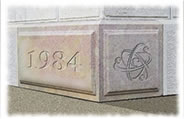How do you get to Carnegie Hall?
He’s cool! He’s hip! He’s with it! He’s a young man with a trumpet case in one hand while the other snaps out the beat as he sashays down the street. Sporting a beret and shades, he’s the embodiment of jazz. Whoa, he stops – comes face to face with an elderly couple (Tourists!): “Excuse me young man, can you tell us the way to Carnegie Hall?” A slow smile of understanding and over his shoulder he replies, as he re-commences the walk, “Practice Man, Practice!”
-Anonymous New York Story
-J.R. St. John
Almost everyone comes to presentation training under duress. “Mastering something you hate” – is not something one thinks about with longing, but instead, something a superior mandates. “Ah joy! I get to plumb the depths of the art of presentation in front of my colleagues while failing to handle my field clients and follow-up calls. So while I’m embarrassed in the field; I can also be embarrassed in conference!”Truth is, you may suffer a little, but we haven’t lost a participant yet.
Know what? You’re not likely to master the art and science of presentation in three days. Not gonna happen. Black belt? Out of the question! But – together, we just might get you to the point where you can practice freely without fear of embarrassment, and you can catch sight of Mastery off in the distance. The lesson; Nobody wins without climbing the hard stairway of Practice. For beginners, we focus on three things: What to practice, Why and How to practice.
What to Practice: “Ready, Set, Go!” and Focus
“Ready, Set, Go!”
1. Establish the Objective! It’s not about you, it’s about them! Know what you want them to do. If all else fails, you simply look at them and tell them! An approach both straightforward & genuine – Great Combination!
2. Analyze the Listener! If you’ve analyzed his motivations, you can leave out what isn’t relevant. Shorter is always better. Since he knows you’ve built it for him, you’ve earned his respect and attention.
3. Organize Your Remarks! Good structure makes it easy to deliver, easy to follow and easy to recall. Every part of the box diagram is there for a reason. Practice a little; the boxes become second nature, and their usefulness reveals itself more with each iteration.
Silence & Focus
“Your focus needs more focus.” (Mr. Han in The Karate Kid)
Mr. Han may have had it right: to silence the mental monkeys and get a clear interior workspace, you simply focus on what’s really important – the listener. Focus on their eyes, and before you know it, you’re not thinking about mental noise or nerves; you’re involved in a conversation. The direct contact you may fear is the very thing that will set you free.
Why Practice: Discovering Mastery
* It’s one thing to understand the concepts: Student.
* Another thing entirely to demonstrate the understanding: Practitioner.
* Doing it endlessly, effectively and effortlessly while enjoying it: Master.
Every hour spent in practice yields its own special reward. As the hours increase, the fears decrease. Practice is the reward. Mastery, which resides beyond the horizon – comes a little later.
How to Practice:
Refinement in the absence of Criticism
We often avoid practice knowing that we’re going to beat ourselves up… Who would subject themselves to that? Learn to discriminate between bad, good, better and best without becoming critical. OK, the first cut may have been a little rough, but keep going and get ten more versions out there for comparison. Then breathe and refine some more. Practice is about improving on the next run, not giving yourself pain for the last one. Good practice always looks ahead.
Practice in Sequence
1st Run: Structure… Make sure the flow and transitions are correct.
2nd Run: Content… Make sure everything is accurate, correct and reflects your “author’s intent.”
3rd Run: Delivery… Make sure the hands, voice, body and visual aids function and collaborate.
4th Run: Fun… Let ‘er rip! Find the fun and enjoy your own stellar performance.
The guy who practices ten times is always better than the guy who didn’t. No exceptions.
Practice Man, Practice!
Applications:
1. Personally:
You don’t get known as a dynamite presenter, manager, facilitator or executive without eons of practice. Put aside a place at home as your practice space. There you do your dry runs. No interference, no bosses, no phone calls, no interruptions. Practice! Run through the presentation. Once, Twice, Three Times. Now you’re getting a glimpse of how it might look as you make it right. Keep at it. One night, two and a Sunday afternoon – Hey, you’re gonna kill ’em on Tuesday!
2. At Home:
The apparency of our microwave popcorn culture is that “anything good can be had in moments,” while you’re watching a first run movie on satellite. In reality this ancient truth has not changed: “Anything of substance must be mastered one slow step after another – until in the fullness of time Mastery is achieved.” Mastery is not a thing, but a moment – evinced by the surrender to endless practice. Teach this to your family and see them rise at school, church and community.
3. At Work:
Find a practice partner: someone who gets it, and will trade their support in exchange for yours as you both practice for the tough meetings, the difficult presentations and the hard confronts. You have to anticipate all the possible outcomes; then prepare the optimum responses and practice each one until you can handle any eventuality as if you had pre-planned the whole thing… Which, in fact, you did! Give your old coach at Fusion a call, just for confirmation.
Practice is the doorway, and the bridge.
Mastery is surrender to endless Practice.
Next stop, Carnegie Hall!
Subscribe to our Newsletter


